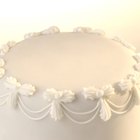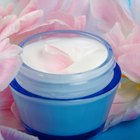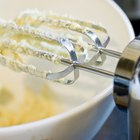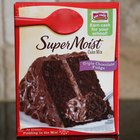
Some cake recipes include cream of tartar, but they seldom explain what the acidic, white powder adds to the process and the finished product. Cooks religiously add the required measure of cream of tartar, even though how the white powder functions is often more of a mystery than its name. The chemical make-up of cream of tartar causes very different interactions when exposed to certain ingredients, surfaces and temperatures. Cream of tartar works its magic in the bowl and in the oven, adding to the chemistry that helps your cake bake properly.
Cream of Tartar
Unlike baking powder and baking soda, “cream of tartar” sounds like an exotic ingredient from a foreign land. The chemical name for cream of tartar is potassium hydrogen tartrate, an acidic salt found naturally in grapes and “harvested” as leftover residue from the wine-making process. Your cake recipe might include cream of tartar as an ingredient, or the cream of tartar could be included in another ingredient, such as baking powder. In addition to an ingredient in cake batter, you might use cream of tartar for cake decorations or toppings.
Rise and Shine
Cream of tartar works as a leavening agent when added to a wet mix, such as cake batter, with baking soda or another base. The chemical reaction of the cream of tartar and baking soda in liquid creates tiny carbon dioxide bubbles. The bubbles cause the cake to rise during baking and makes your cake tender and moist. Too much cream of tartar, as with any leavening agent, creates big carbon dioxide bubbles and results in the opposite effect, which causes cakes to collapse or fall. Double-acting baking powder, which most commonly is used in home kitchens, often includes cream of tartar as the acid that reacts chemically to water and another acid that reacts to oven temperature.
Topping It Off
Cream of tartar is a stiffening agent for making icings and meringues. The same acidic powder that leavens during baking prevents the crystallization and hardening of the sugar when making icing for the cake. However, bakers also use cream of tartar to make hardened cake icing or the really hard royal icing. Use cream of tartar to whip egg whites and sugar into a stiff-peaked meringue topping for your cake. Cream of tartar stabilizes the resulting foam so the peaks last.
Use Just Enough
When using cream of tartar, it’s important to follow the recipe and add only the required amount. Cream of tartar contributes to the flavor of the cake, but too much of the acidic powder can create a bitter taste. Some recipes require baking powder and cream of tartar to add even more acid to the batter, which increases the moistness and tenderness of the finished product. Store cream of tartar in a dry, cool place to prevent it from becoming moist and clumpy, which will affect how it reacts in your cake-making processes.
Related Articles

What Are the Ingredients in Elizabeth ...

How to Make Whipped Frosting Without ...

What Makes Cream Liqueur Curdle in ...

How to Add Irish Cream to Buttercream ...

How to Make a White Decorator Icing

Do You Still Need Baking Powder & Salt ...

Ingredients in Oil of Olay Moisturizer

Lancome Skin Care Ingredients

Does Baking Soda Affect the Height of a ...

Does Seven-Minute Frosting Need to Be ...

Does Cream-Based Frosting Have to Be ...

The Shelf Life of Citric Acid

The Ingredients of Neutrogena Sensitive ...

How to Make a Box Cake Firmer to Frost

How to Repair Nicks in Leather Boots

How to Make Homemade Liquid Rouge
How Can I Prepare Whipping Cream Ahead ...

List of Retinoids

How to Improve a Box Cake Mix for ...

What Is a Substitute for Potassium ...
References
Resources
Writer Bio
Gail Sessoms, a grant writer and nonprofit consultant, writes about nonprofit, small business and personal finance issues. She volunteers as a court-appointed child advocate, has a background in social services and writes about issues important to families. Sessoms holds a Bachelor of Arts degree in liberal studies.
Photo Credits
Jupiterimages/Pixland/Getty Images